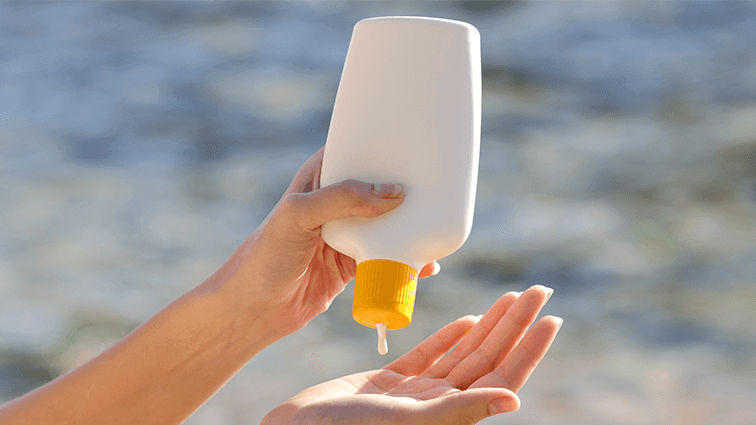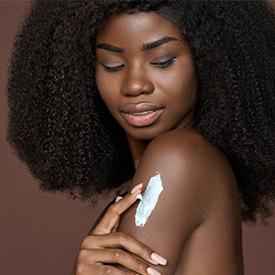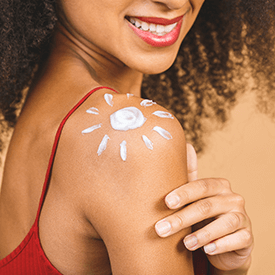Why People of Color May Not Be Getting the Daily Sun Protection They Need
&srotate=0)
Why people of color may not be getting the daily sun protection they need. Let’s change that.
Many have bought into the myth that “Black and brown skin doesn’t need SPF.” This myth about the need for sunscreen has unfortunately even created the belief that darker, melanin-rich skin tones simply don’t need to apply SPF but that absolutely isn’t true. Let me explain…
The FACTS
- Studies don’t say that people of color won’t ever get skin cancer, only that the possibility.
- “Death caused by skin cancer is higher in people of color because it’s often diagnosed late, when in an advanced stage and/or symptoms are not easily recognized.” - Dr. Sumayah Jamal, Dermatologist
- Melanin does not completely protect against UV damage. You still need SPF protection to fight against the different types of sun damage that occurs in your skin, including the breakdown of collagen.
- The redness associated with a sunburn cannot be seen on brown and black skin. Redness is the common visible indicator of sunburn but sunburn symptoms like dryness and itching are also indicators. This leads many people with darker skin to believe they’ve never had a sunburn, and therefore don’t need sunscreen.
 About Clinical Trials
About Clinical Trials
Clinical trials and medical journals are just now starting to diversify their participants for a more accurate representation of skin of color, UV damage, skin cancer, and skin protection via sunscreen for skin of color, meaning the statistics we have today will see a dramatic—and more accurate—shift. Dr. Sumayah Jamal, Dermatologist
What’s the importance of broad-spectrum SPF
Whether it’s SPF for face or for body, always look for words like “broad-spectrum protection” or “blocks UVA and UVB light” when choosing your SPF skin defense. Broad spectrum is the only type of sunscreen that defends against the UVA and UVB wavelengths of light. UVA rays are known to penetrate deeper into the skin and (in addition to causing premature skin damage like dark spots, sagging, and wrinkles) are primarily credited for causing skin cancer. UVB rays are responsible for sunburn and can also cause skin cancer. Protecting against both is critical for all skin types and tones, from the fairest to the most melanin-rich.
 Do I need to worry about blue light?
Do I need to worry about blue light?
Not only do we get blue light from the sun, but we also are exposed by our devices. There are many emerging studies on the effects of blue light from our digital devices, and although this is a new area of study, there is no reason to discount the importance of protection. Using high quality, medical grade, physical block sunscreen is necessary for full protection. We recommend Alastin HydraTint for protection that won’t make create an ashy appearance.
Do you REALLY have to reapply SPF?
It’s always best to reapply every 2 hours, but not always convenient. If you’re going to be outdoors and engaging in sun activities, sweating, swimming, and the like, it’s absolutely crucial to reapply every 2 hours to protect your skin from sun damage.
SPF is not seasonal
UV light is what causes sunburn and sun damage. UV light surrounds us anytime the sun is up and in Florida, the UV index is higher than many places in the country. UV light can permeate clouds and penetrate windows. Although the UV index is much higher in the summer, the damage caused by exposure is cumulative, meaning it adds up over time and surfaces over time as cosmetic concerns—dark spots and premature wrinkles and sagging—to more serious concerns like melanoma and skin cancer.
Sources:
Preventative Medicine Reports, 2019
International Journal of Dermatology, Sunburn and sun protection in Black skin
Asian Pacific Journal of Cancer Prevention, Skin cancer concerns in people of color: Risk factors and Prevention
Healthline Website, Skin
University of Iowa Hospitals & Clinics, Sun safety